The team behind the great titles sequence for Marvel's Daredevil on Netflix speaks with me about the concepts and design. In this interview, I'm joined by Director Patrick Clair, Executive Producer of Elastic Jennifer Sofio Hall and CG Supervisor Andrew Romatz. Many thanks to them, and also Head of 3D Kirk Shintani!

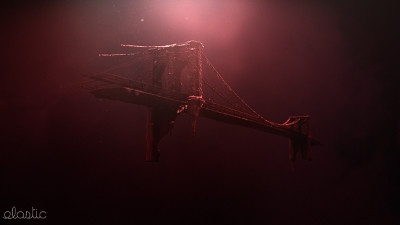
Kuljit Mithra: Thanks for taking the time to do the interview. The Daredevil show has been out for a few months now, but for you and your team, this must have been a long process. When did your company start working on the titles?
Andrew Romatz: The CG team and I started working in September of 2014. We started working on sculpting Daredevil and Lady Justice and building our camera moves around those sculptures. Miguel Salek also started developing the fluid simulation around this time as well.
Mithra: How did your company get involved with the show?
Jennifer Sofio Hall: Marvel approached us and asked if we would pitch on the show and of course we said yes.
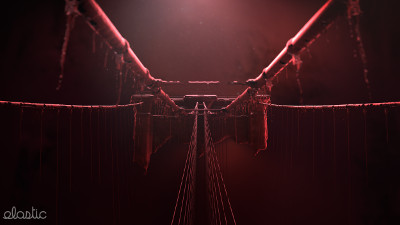
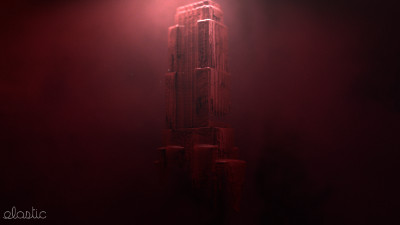
Mithra: In terms of what Marvel wanted, did they give you a rough outline of what they were thinking, or did they leave it to you and then they would approve/reject? What led to the "blood" outline concept? The colors, the fonts, the choice of buildings, architecture...
Patrick Clair: The team was very supportive, they really let us drive our creative ideas - while also being collaborative and helping us shape the execution. The best title sequences seem to come when the production team take the time to really help us understand their vision for the world, then we can craft a sequence unique to the story they are telling.
The showrunners and producers briefed us on the character and the world, and I read the script to the pilot episode. What struck me was the insidious corruption creeping into Hell's Kitchen through the rebuilding process following the events of Avengers. This seemed like a strong theme to tap into, but I was also thinking about justice, the symbolism of blind justice, the detail of the New York streets and the origin of DD in the poisonous radioactive goop. All of this lead us to a point where a sticky liquid - be it blood or poison - could form these icons from invisible forms. It was an exciting creative process.
I love the red of DD's costume, and the way it evoked blood was great - however, it can also recall the poison that first forged both DD's blindness and his superpower. From there, we used both traditional illustrations and computer simulations to explore how that liquid could bring forms to life in 3D. DD's world is full of iconic period architecture, classic statues and antique religious symbols... so I wanted the framing and typography to reflect a timeless and classic sensibility.
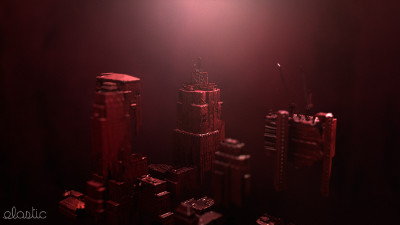
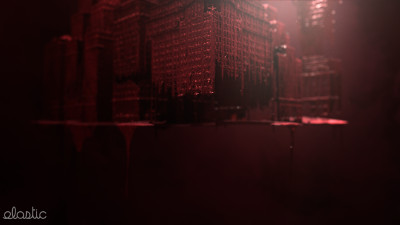
Mithra: Were there any other concepts that didn't get used, or any parts that were incorporated into the final one?
Clair: We always explore a number of directions early on in our development, but we quickly zoned in on this as the best way to go. Marvel and the show team loved it from day one, so we drew on all our development work to focus in on a single, very bloody, direction.
Mithra: Did the theme music by John Paesano come before or after your designs? How difficult was it to mesh?
Romatz: We were actually working with a completely different track all the way through creating the animation. The music was scored to the visuals and we didn't hear John Paesano's track until a few days before we delivered our final version. It was a bit of a shock at first, to hear the music change so drastically, but now that I've had a chance to get used it I think it works really well.
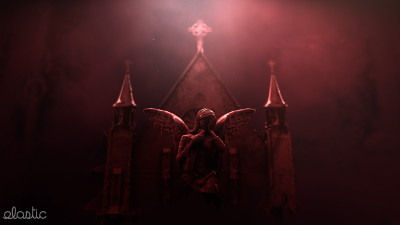
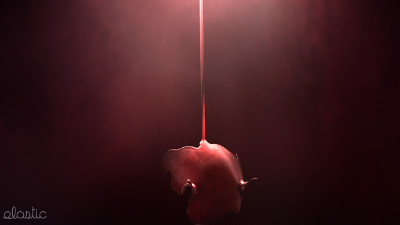
Mithra: Did you even know what the final costume looked like on the show before using the Daredevil image at the end of the titles?
Romatz: I wasn't shown anything from the show aside from the Daredevil logo. We referred to artwork from the comics primarily when we were sculpting our version of Daredevil and then worked with Marvel on getting it in line with the production design for the show. The main sticking point was getting the horn placement and length just right.
Mithra: I've read there were over 20 people involved with the final product, so I wanted to get a better idea of the process. Is there a storyboard team, a graphics team, a project manager etc.?
Romatz: To start Patrick developed concepts to present and guided designers at Elastic in creating concept art for hero frames for the various concepts which were presented.
Once the dripping liquid concept was selected Patrick continued working with Elastic to create concept art for all the shots in the piece. From that point Patrick worked with an editor at RPS to cut a boardomatic over the temporary music track we were using for mood. Concurrently the CG team started sculpting models and once the boardomatic was ready we started creating previz animation to flush out the shots and then we built out the edit working with Patrick from there...
Once the CG teams starts working we like to get as much work happening concurrently as possible so we can get the best looking result possible. Our Lead Effects Artist Miguel Salek developed fluid simulation, Kirk Shintani (the Head of CG at A52) and I worked on composing the shots and creating camera moves. The modelling team worked on creating the sculptures and building the brooklyn bridge and city layouts and our Lookdev artist Katie Yoon worked on developing shaders and textures to get the right look.
From there continued to refine every aspect of the CG from cameras and fluid fx to lighting and texturing pushing all the shots forward until we had renders for everything at which point our compositor Shahana Kahn came on board and pushed the look even further.


Mithra: Were there any fans of Daredevil on the team beforehand?
Romatz: I have to admit I've always been a hardcore Batman fanatic, but Miguel, Kirk and Shahana love Daredevil.
Mithra: Last question... Although the titles themselves are about a minute long, the processing power required to generate and produce it must have been substantial. What kind of tools were used to create the graphics and what was required behind-the-scenes to put it all together? For example, how do you even program the physics to drape a slow moving liquid over an object?
Romatz: I'll say first off that Miguel Salek is brilliant. He used Real Flow which is a fluid simulation program to do the fluid simulations for the project. Miguel worked with Vivian Su on four souped up desktop machines to do the bulk of the simulations. Miguel developed some specialized tools for the project. Specifically, directable velocity and custom attractor fields to get the fluids to flow in line with Patrick's vision.
--------------------------------------------------------------------------------------------
(c) 2015 Kuljit Mithra & Elastic
Daredevil:The Man Without Fear
http://www.manwithoutfear.com
--------------------------------------------------------------------------------------------














Daredevil (and other related characters appearing) and the
distinctive likenesses are Trademarks of Marvel Characters, Inc. and are
used WITHOUT permission.
Copyright © 2024 Marvel Characters, Inc.
All
Rights Reserved. Visit Marvel.com.
www.manwithoutfear.com is owned and operated by Kuljit Mithra.
Web site is © Kuljit Mithra 1996-2025.
Keep up to the date with your trusted Daredevil source ManWithoutFear.com on  and
and 